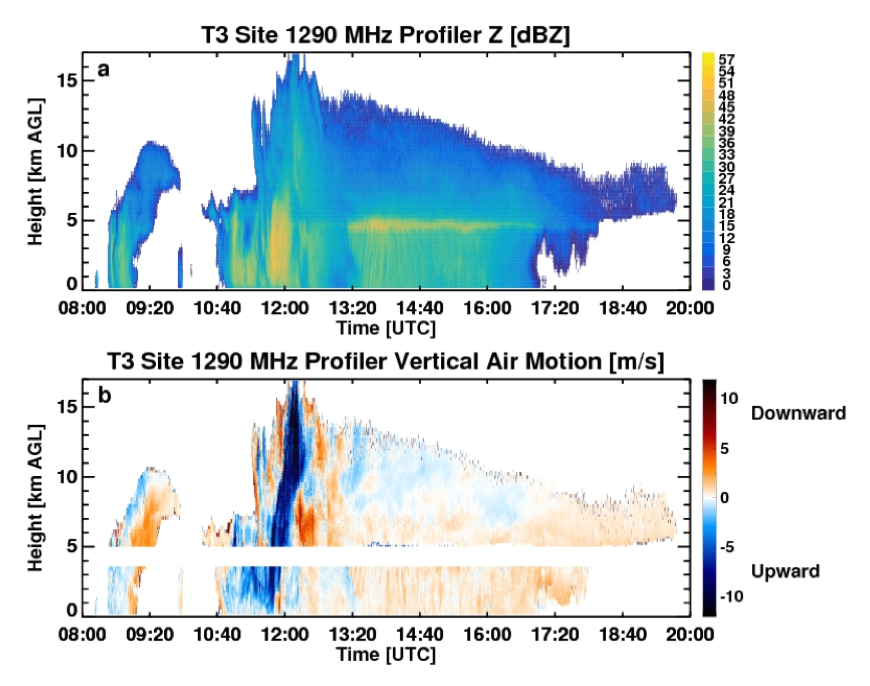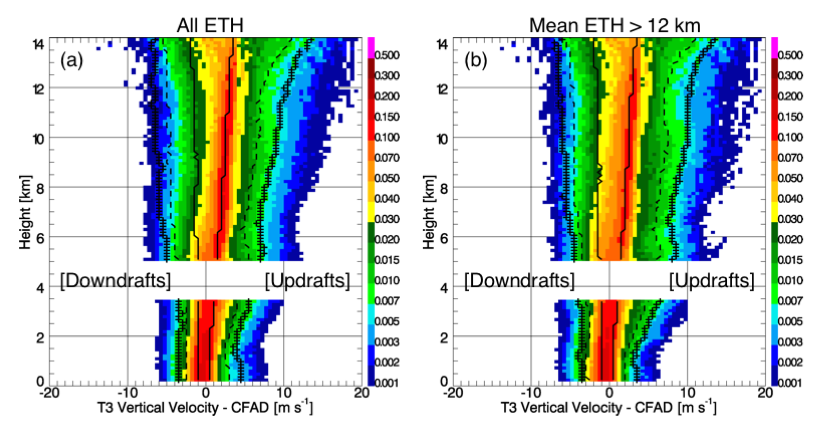Deep convective vertical velocity insights from ARM profilers in the Amazon
Submitter:
Giangrande, Scott — Brookhaven National Laboratory
Area of research:
Vertical Velocity
Journal Reference:
Science
Profilers have been underutilized for their unique insights into deep convective storm vertical velocity and precipitation distributions. ARM Radar Wind Profilers (RWP) in the Amazon are used to inform Global Climate Model (GCM) deep convection parameterizations. This is accomplished by characterizing the relationship between storm environment and intensity in terms of vertical velocity, convective area coverage, and updraft/downdraft mass flux.
Impact
Deep convective vertical velocity and precipitation insights are valuable for unlocking uncertainties in current model simulations of climate change. Our efforts provide the first vertical motion climatology of Amazon clouds, and help investigate the role of environmental forcing on deep convective storm areal coverage and intensity. For Amazonian storms, we confirm that more intense convection is found within the Dry season, and substantial increases in updraft mass flux in the Wet season.
Summary
A RWP data set collected during the DOE ARM GoAmazon 2014/15 campaign is used to estimate convective cloud vertical velocity, area coverage, and mass flux profiles. Vertical velocity observations are presented using normalized cumulative frequency histograms (CFADs) and weighted-mean profiles. This is done to provide convective insights in a manner suitable for GCM-model scale comparisons. The sensitivity of storm intensity to changes in environmental conditions and seasonal regime controls is also considered.
Overall, we observe that updrafts and downdrafts increase in magnitude with height to mid-levels (6 to 10 km), with updraft area also increasing with height. Updraft mass flux profiles similarly increase with height, showing a peak in magnitude near 8 km. Stronger vertical velocity profile behaviors are observed under higher CAPE and lower low-level moisture conditions. Sharp contrasts in convective area fraction and mass flux profiles are most pronounced when retrievals are segregated according to Amazon wet and dry season conditions. Wet season regimes favored higher domain mass flux profiles, attributed to more frequent convection that offsets weaker average convective cell vertical velocities.



